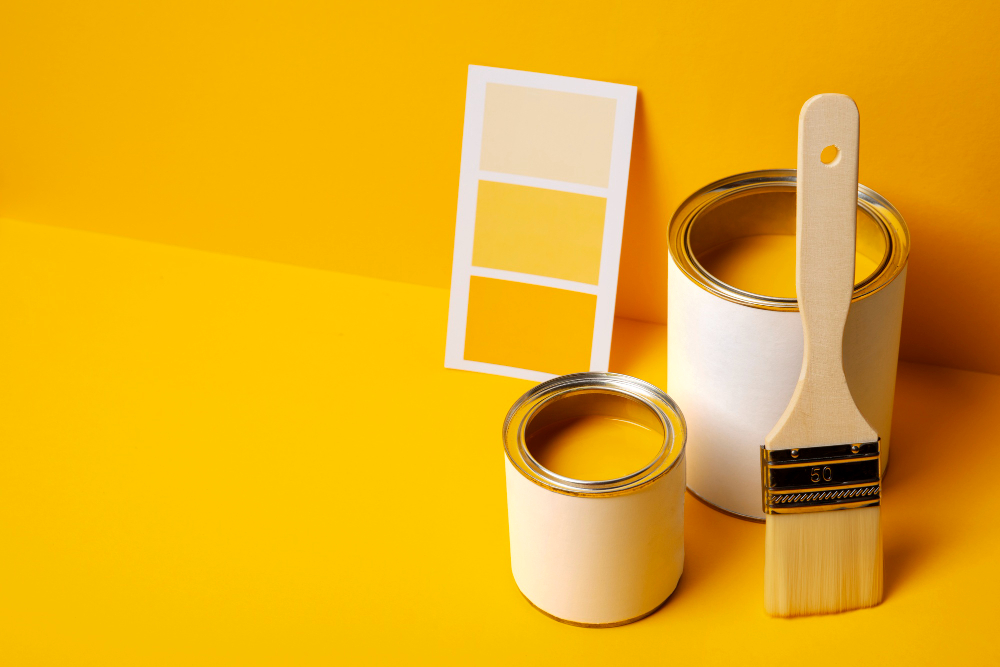Debunking Common House Painting Myths

The world of home decor and improvement is often colored with myths and misconceptions, and painting your house is no exception. With the myriad of advice, tips, and Pinterest inspirations out there, it's not always easy to distinguish fact from fiction. Here, we roll up our sleeves and dip into the truth, debunking some of the most common house painting myths that might be casting a shadow on your decorating dreams.
Myth #1: The More Coats, the Better
One of the most pervasive myths is that the more layers of paint you apply, the more durable and longer-lasting the finish will be. While a good primer and multiple coats can provide excellent coverage for high-wear areas, like doors and baseboards, overdoing it is an unnecessary expense that can leave your walls looking clunky and may even lead to cracking as the layers dry and settle over time.
Reality Check
A quality paint job typically involves two coats for new, unpainted surfaces, and often just one additional coat when changing hues or refreshing a wall's color. The key is not just the number of coats, but the quality of the paint, proper preparation, and the technique used. Invest in premium paints with high pigment levels that can cover in a single coat to save time and effort.
Myth #2: All Paints Are Created Equal
The home improvement store aisles may be lined with a dizzying array of paint cans, but they are not all created equal. There's a prevailing notion that any can of paint is as good as another, with little more than the label to distinguish between them.
Reality Check
Different paints are formulated for different purposes. The best paint for a kitchen, for example, might have different characteristics than the best paint for a bathroom. Ask the professionals, and don't skimp on quality when it comes to choosing paint. Look for trusted brands with the sheen, finish, and washability designed for your specific needs.
Myth #3: You Can't Paint in Cold or Humid Weather
Many DIY enthusiasts believe that painting is a strictly temperate-season activity, avoiding the project during the fall and winter months or in regions with high humidity, fearing the paint won't dry or adhere correctly.
Reality Check
Modern paint formulas are much more versatile than many believe. While extreme temperatures can certainly cause problems, painting in slightly cooler or humid conditions is generally fine. It may require adjustment to drying times and application techniques, but with the right paints and procedures, you can achieve great results year-round.
Myth #4: You Can't Paint Over Dark Colors with Light Ones
This myth often dissuades people from making significant color changes, believing they have to laboriously layer on numerous coats to hide a dark shade with a lighter one. They worry about time and expense, and so they stick to the same spectrum.
Reality Check
Paint technology has come a long way. With the right type of primer and high-quality paint, switching from a dark color to a light one can successfully be achieved with a minimal number of coats. Look for a paint and primer in one for this type of job – it saves time and money while delivering excellent coverage.
Myth #5: You Can't Touch Up Matte Paint
Matte paints are loved for their velvety finish, but often fears surround whether they can be successfully touched up. Some think the blending won't work, and you'll end up with obvious patches.
Reality Check
Matte paint can be touched up with ease, provided you have the original batch or a very similar color match. The key is not to overload the brush with too much paint and to feather out the edges of your touch-up to blend it into the rest of the wall. In some cases, a tiny bit of light sanding over the touch-up area can also help the new paint mesh with the old.
Myth #6: Primer Is Always Necessary
There's a belief that primer is an absolute must before you apply paint – every single time, no exceptions. It's viewed as the secret sauce that ensures paint adhesion and a better finish.
Reality Check
While a primer is essential for specific situations like repairing damaged surfaces or going from a dark wall to a lighter one, it's not always necessary for every painting job. High-quality paints often contain primers, and they're formulated to adhere to a variety of surfaces. If you're unsure, a quick consultation with a paint professional can guide you on whether your particular project requires a primer.
Final Thoughts
With these common house painting myths debunked, you're now better equipped to take on your next painting project with confidence and knowledge. Remember, preparation, technique, and quality materials are crucial when maintaining a beautiful paint job. If you're still unsure, don't hesitate to consult with professional painters like Color Masters Painting, especially if you're based in South Daytona, FL, where their expertise can turn your painting challenges into a masterpiece. Ready to revitalize your living space with a fresh coat of paint? Don't be swayed by common misconceptions – paint your truth and transform your home with color. If you're looking for professional painters in South Daytona, FL, contact Color Masters Painting today to get your free quote.